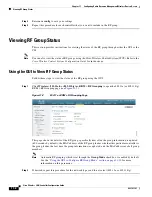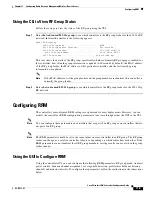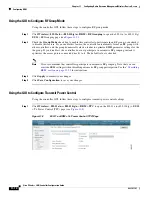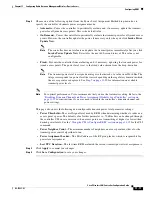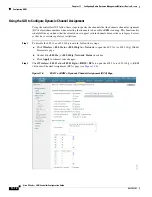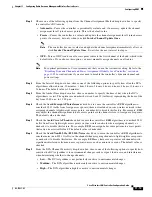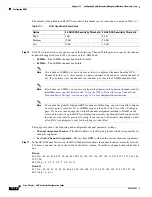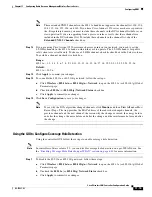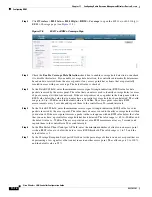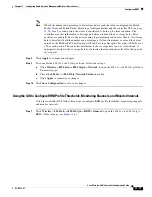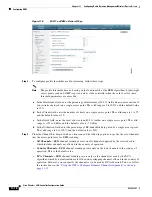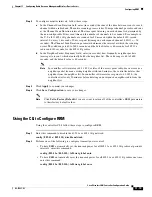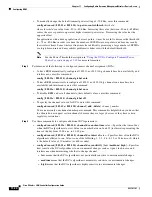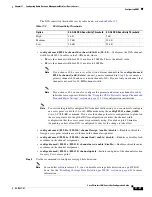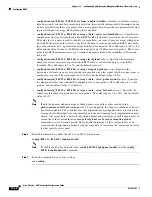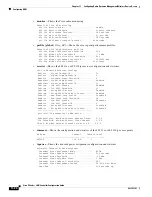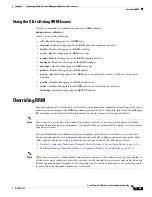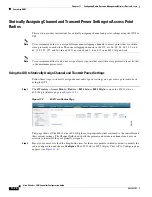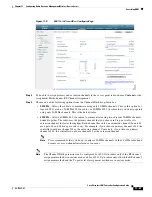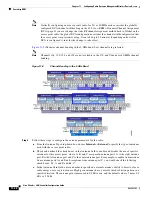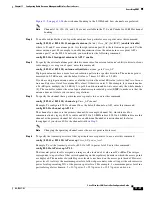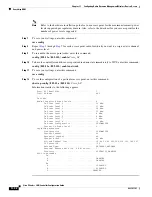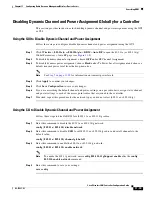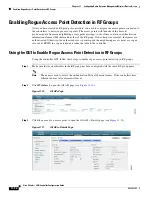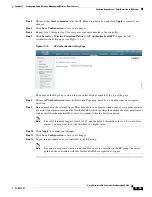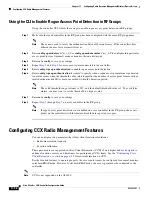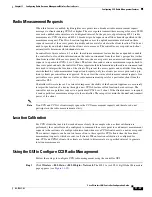
11-22
Cisco Wireless LAN Controller Configuration Guide
OL-17037-01
Chapter 11 Configuring Radio Resource ManagementWireless Device Access
Configuring RRM
•
config advanced
{
802.11a
|
802.11b
}
coverage
{
enable
|
disable
}—Enables or disables coverage
hole detection. If you enable coverage hole detection, the controller automatically determines, based
on data received from the access points, if any access points have clients that are potentially located
in areas with poor coverage. The default value is enabled.
•
config advanced
{
802.11a
|
802.11b
}
coverage
{
data
|
voice
}
rssi-threshold
rssi
—Specifies the
minimum receive signal strength indication (RSSI) value for packets received by the access point.
The value that you enter is used to identify coverage holes (or areas of poor coverage) within your
network. If the access point receives a packet in the data or voice queue with an RSSI value below
the value you enter here, a potential coverage hole has been detected. The valid range is –60 to –90
dBm, and the default value is –80 dBm for data packets and –75 dBm for voice packets. The access
point takes RSSI measurements every 5 seconds and reports them to the controller in 90-second
intervals.
•
config advanced
{
802.11a
|
802.11b
}
coverage
level global
clients
—Specifies the minimum
number of clients on an access point with an RSSI value at or below the data or voice RSSI
threshold. The valid range is 1 to 75, and the default value is 3.
•
config advanced
{
802.11a
|
802.11b
}
coverage
exception global
percent
—Specifies the
percentage of clients on an access point that are experiencing a low signal level but cannot roam to
another access point. The valid range is 0 to 100%, and the default value is 25%.
•
config advanced
{
802.11a
|
802.11b
}
coverage
{
data
|
voice
}
packet-count
packets
—Specifies
the minimum failure count threshold for uplink data or voice packets. The valid range is 1 to 255
packets, and the default value is 10 packets.
•
config advanced
{
802.11a
|
802.11b
}
coverage
{
data
|
voice
}
fail-rate
percent
—Specifies the
failure rate threshold for uplink data or voice packets. The valid range is 1 to 100%, and the default
value is 20%.
Note
If both the number and percentage of failed packets exceed the values entered in the
packet-count
and
fail-rate
commands for a 5-second period, the client is considered to be in a
pre-alarm condition. The controller uses this information to distinguish between real and false
coverage holes. False positives are generally due to the poor roaming logic implemented on most
clients. A coverage hole is detected if both the number and percentage of failed clients meet or
exceed the values entered in the
coverage level global
and
coverage exception global
commands over a 90-second period. The controller determines if the coverage hole can be
corrected and, if appropriate, mitigates the coverage hole by increasing the transmit power level
for that specific access point.
Step 6
Enter this command to enable the 802.11a or 802.11b/g network:
config
{
802.11a
|
802.11b
}
enable network
Note
To enable the 802.11g network, enter
config 802.11b 11gSupport enable
after the
config
802.11b enable network
command.
Step 7
Enter this command to save your settings:
save config

